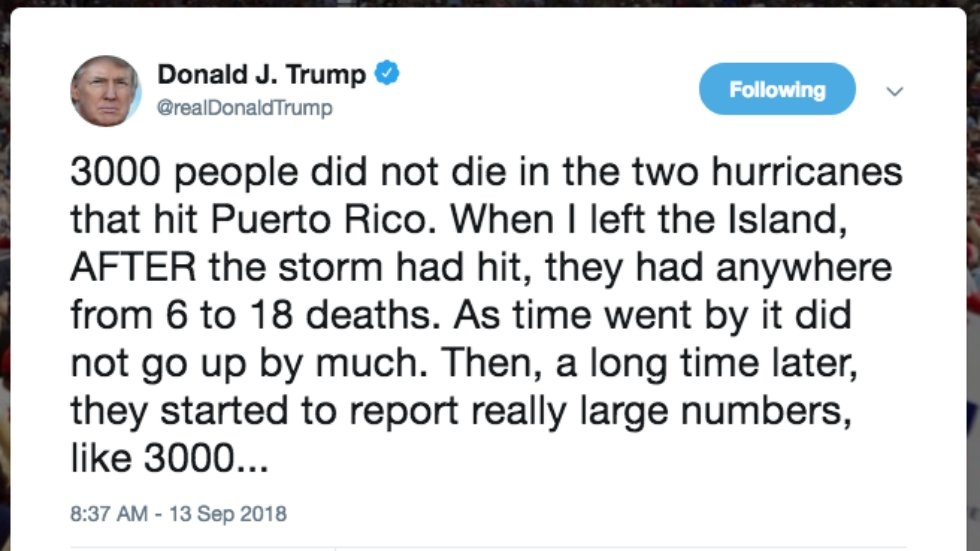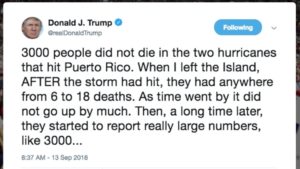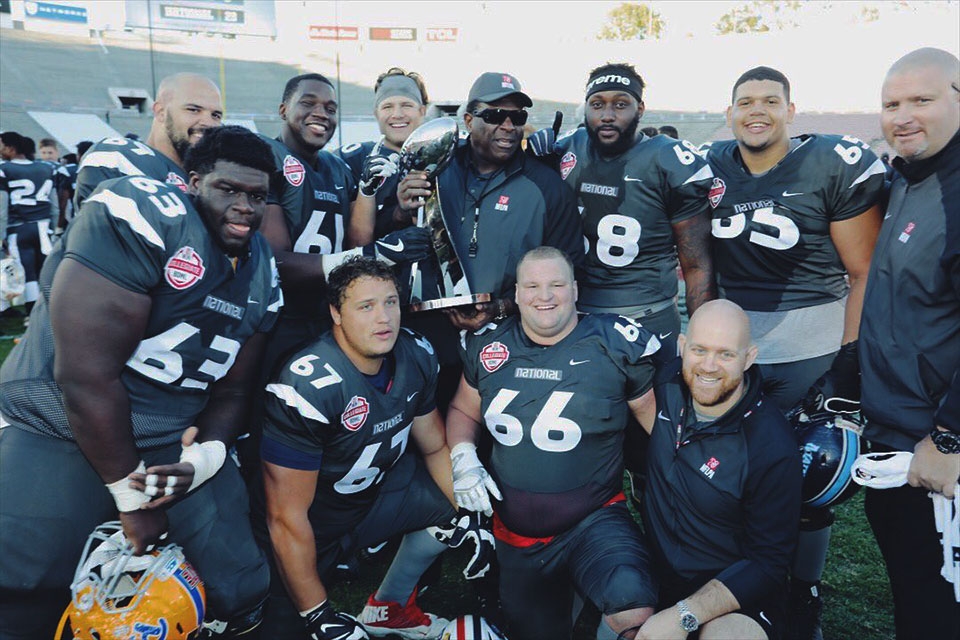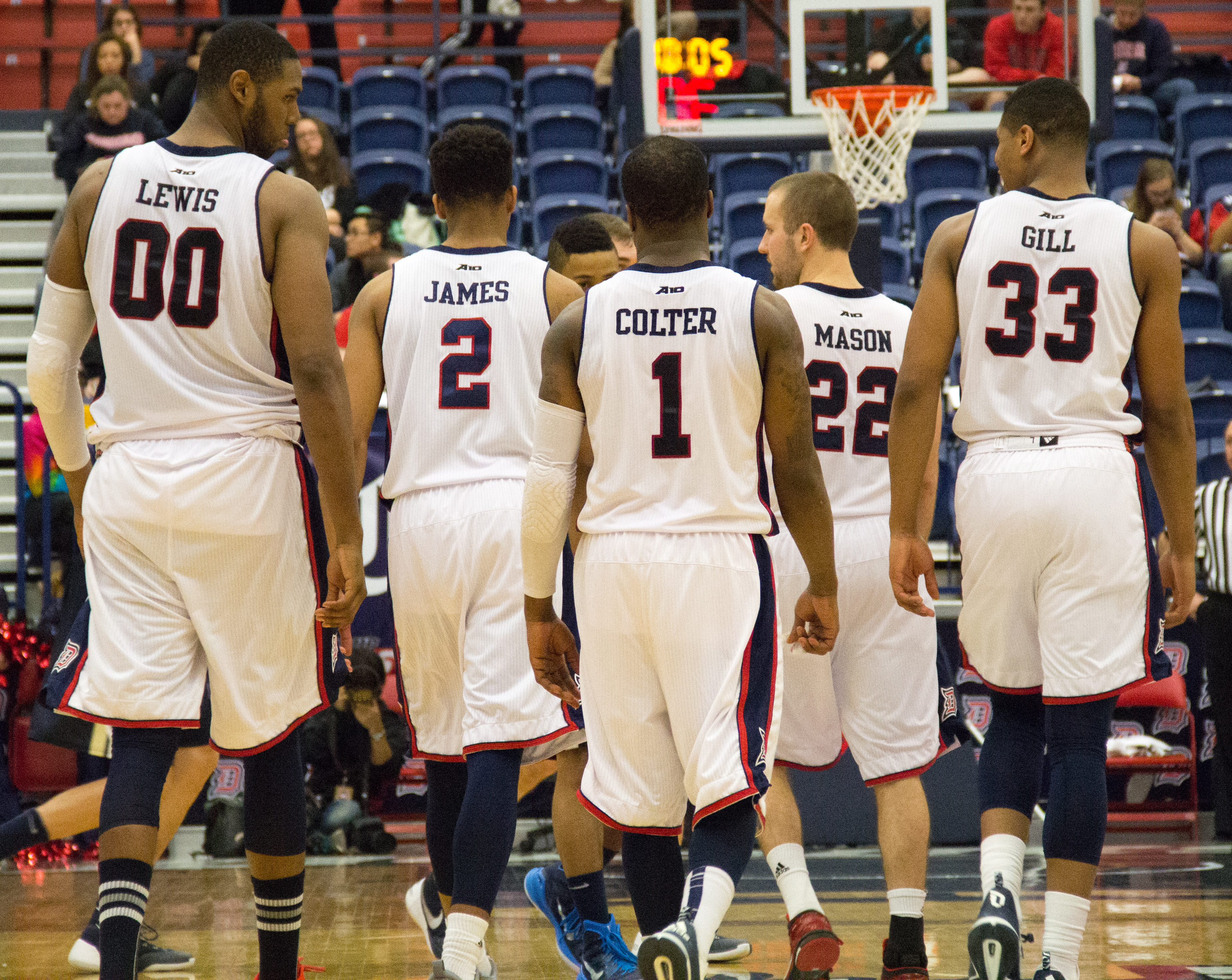

Trump’s divisive rhetoric has once again sparked outcry.
09/20/2018
By Ollie Gratzinger | Opinions Editor
As mainland America prepares for restoration efforts following Hurricane Florence’s landfall, President Trump took to Twitter once again with what might just be his worst and most disturbing take yet: The roughly 3,000 deaths in Puerto Rico following the devastating Hurricane Maria were fabricated by the left in an attempt to make him look bad.
On the morning of Sept. 13, the president tweeted out, “3000 people did not die in the two hurricanes that hit Puerto Rico.” In a follow-up, he continued, “This was done by the Democrats in order to make me look as bad as possible … Bad politics. I love Puerto Rico!”
The study, conducted by George Washington University Milken Institute School of Public Health, included in its tally those who died of other storm-related causes including stifling heat, which wasn’t included in the original death count of 64, according to CNN. Other studies conducted by Harvard, Penn State and the New York Times have also found the true death toll to be in the thousands.
All major news outlets report that there is no evidence to support Trump’s claim that the numbers reveal any sort of liberal conspiracy. The death toll, resting at 2,975, has not been inflated or falsified, according to all credible sources. The only thing that seems to have been inflated is the ego of our Commander-in-Chief.
Much of Puerto Rico had no electricity or clean water for weeks after Hurricane Maria, and even now, almost a full year after the storm made landfall, some of the island’s residents in more rural areas are still without power. For those families, simple tasks like preparing food, keeping medications cool and rebuilding lost homes are made all the more difficult.
Now, Trump demands to be glorified for what he called “underappreciated” work in the restoration of Puerto Rico. One can’t help but wonder if this “underappreciated” work includes his initial comments, spoken two weeks after the disastrous storm, which dismissed Hurricane Maria as not a “real catastrophe like Katrina,” or his dismissiveness of the then-16 reported deaths.
“Sixteen people, versus in the thousands,” Trump said during a 2017 briefing on recovery efforts. “You can be very proud. Sixteen versus literally thousands of people.”
Now, with the death toll allegedly in the “literal thousands,” one might think the president ought to acknowledge what was by all means an epic failure on part of the American government. But instead, he has elected to reawaken a dangerous beast and shift the blame from himself to his biggest enemy: the liberals.
Coming after nearly two years of Trump discrediting the media and radicalizing his base against immigrants, journalists, liberals and Muslims, this fits into a larger narrative whose image grows more sinister by the day. Trump’s rampant nationalism and fervent military support, when coupled with the ongoing family separation crisis at the border the perpetuation of the Sinclair propaganda script earlier this year, paints a portrait that darkly resembles ages past; It wasn’t long ago that Rob Rogers was fired from his position as the Pittsburgh Post-Gazette’s cartoonist — a position he’d held for more than two decades — because he’d criticized Trump.
For the president to deny the death of 2,975 human beings, all of whom were American citizens, is bad enough. For Trump to use that denial as a tool aimed at dividing a people already estranged from one another, to craft an irreparable schism between a nation and its free press and to rally a mighty, united base against a set of common enemies is another thing entirely. To do so defines within society an in-group and an out-group. Scarily, that’s something we’ve seen before, too. It leaves us left to ponder the very future of our democracy as we know it.
When NBC News asked Jason Stanley, Yale professor and child of Holocaust survivors, if he believed America had indeed become fascist, his answer, in short, was not yet.
“In other words,” the NBC article read, “By the time the people in power have instituted fascism, it’s too late to call it that.” The article goes on to state that a government doesn’t need to be fascist to implement the dangerous fascist tactics of division and hate, and while Trump does indeed use fascist tactics, he isn’t the first American leader to do so, even if his approach is more unique and openly awful.
If you’ve ever faced history in retrospect and said to yourself that if you would’ve been there, you would’ve spoken up, now is your chance to prove it. One day, children will grow up in a post-Trump world and read about these things in their textbooks, just like we read about 9/11, Cold War duck-and-cover drills, Vietnam protests and the Holocaust. One day, field trips will be taken to museums with exhibits chronicling the horrors of family separation, North Korea’s nuclear war threats and the time it felt, once again, as if the world could end tomorrow. One day, children might ask us why. What, then, will we tell them?




